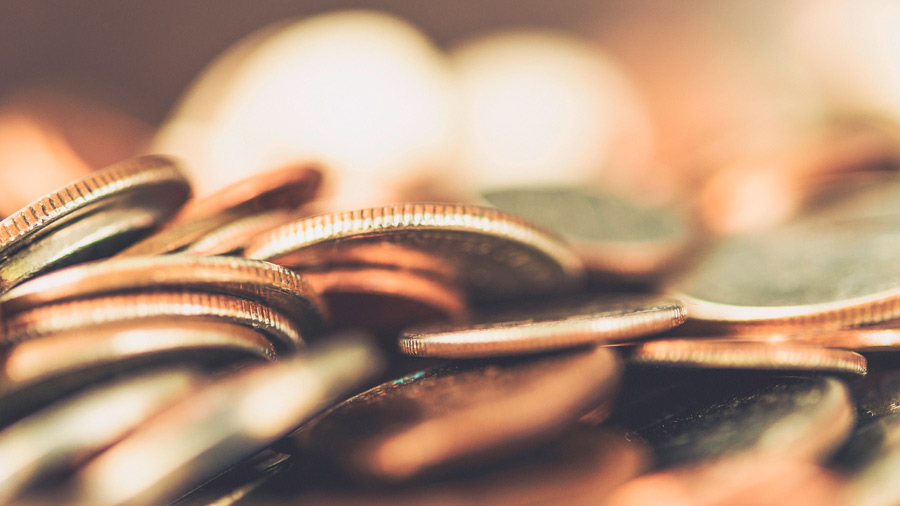Personal Wealth Management / Market Analysis
How Europe Kicked Its Russian Energy Dependence
A symbolic pipeline goes offline, but markets have long since moved on, in our view.
On New Year’s Day, Russian gas stopped flowing to Europe via Ukraine. We read comments from some politicians who heralded the development as “a new victory” for the Continent, whilst others warned it was bad news for both the EU (European Union) and Russia.[i] But in our opinion, this symbolic move is ancient history to forward-looking markets, which have long since moved on.
Our studies show Russia and Ukraine’s gas ties go back decades. In the 1990s, Russia’s only path to send gas to EU nations was a Soviet-era pipeline through Ukraine.[ii] It flowed many, many years. Occasionally it would cease, usually as Russian retaliation when Ukraine would siphon gas for its own needs or couldn’t pay its bills.[iii] But it always came back, even through the Maidan revolution that felled Ukraine’s former pro-Russian leadership 11 years ago, Russia’s ensuing invasion of Crimea (then Ukrainian territory) and the subsequent war in Ukraine’s eastern regions. And when Russia outright invaded Ukraine in 2022, starting a war that continues now, the gas still flowed.
Until the new year, that is, when a five-year transit agreement signed in 2019 expired. As war raged, Ukraine and its Western allies hoped to kneecap Russia financially by ending the EU’s reliance on Russian gas and thus robbing Russia’s government of a key revenue source, whilst Russia used threats to end gas flows as leverage in a (failed) attempt to end Western sanctions. Long before the deal expired, its end was a foregone conclusion.
However, weaning off Russian energy was easier said than done. Since Russia provided almost half of EU gas imports, we read plenty of reports arguing Europe risked much higher energy prices—with potentially dire downstream consequences (e.g., power rationing and/or blackouts).[iv] Some pain points did materialise. Gas prices soared at times in 2022, lashing European industry and heaping pain on households trying to keep the lights and heater on.[v] Some manufacturing plants had to cut production and put employees on furlough, and a few high-profile firms downsized operations, closed or moved out of Europe.[vi] But the worst-case scenario, a crushing recession (a prolonged economic downturn), didn’t come to pass. Nations didn’t have to implement rolling blackouts as supply proved more resilient than expected. Gas prices didn’t stay sky-high in perpetuity, and everyone thus got breathing room. (Exhibit 1)
Exhibit 1: European Gas Prices Over the Past Five Years

Source: FactSet, as of 6/1/2025. Dutch TTF gas prices, 3/1/2020 – 3/1/2025.
Note, too, prices didn’t soar again despite ongoing supply fears. For example, in 2023, European gas supply concerns returned due to a cacophony of potential threats, from Middle East conflict and labour strikes in Australia to pipeline sabotage in the Baltic Sea and a feared Artic Blast of extremely cold weather. After a brief summertime bump, prices eased.
According to our research, Europe overcame its Russian energy supply problem by adjusting and adapting far more effectively than almost any pundit we followed deemed likely. See Germany’s nimbleness in response to the budding energy crisis. In March 2022, the government fast-tracked the permitting process for the construction of a seaside liquefied natural gas (LNG) terminal at the coastal town of Wilhelmshaven.[vii] Utilities company Uniper finished the project in nine months, and the floating terminal went online that December—allowing Germany to receive LNG from overseas producers, including America.[viii] Gas supply has stabilised to the point Germany now plans to pause its Wilhelmshaven terminal temporarily in Q1 this year.[ix] Supply is high enough that they don’t need to process new imports for a few months. We know this is cold comfort amidst Britain’s present freeze and gas supply shock, but it is illustrative.
This energy supply stabilisation is a Continent-wide phenomenon. Going into the 2024 – 2025 cold season, EU gas storage facilities were almost full.[x] Now about halfway through the coldest months—and even after the biggest pull from storage levels since 2018—EU reserves remain around 70% full, suggesting immediate energy shortfall risk is minimal.[xi]
No single factor is solely responsible for this better-than-anticipated outcome, based on our analysis. Some of it reflects Europe’s ability to find other suppliers, including the US, North African countries and Qatar, to replace Russian energy.[xii] Businesses, too, have adapted.[xiii] Companies that can afford to have absorbed the higher energy costs whilst others have passed them on to customers, and some businesses have resorted to more remote working arrangements (shifting energy costs from the firm to employees).[xiv] That isn’t beneficial for growth, but it also isn’t the damaging economic hit envisaged.
So whilst the nearly three-year-old war between Russia and Ukraine remains a devastating humanitarian tragedy, its feared threat to Continental European energy supply hasn’t come to pass. Rather, Europe adapted to the new energy environment, a reality markets recognised and reflected accordingly, in our view.
[i] “Russian Gas Flows to Europe via Ukraine Cease as Transit Agreement Expires,” Shaun Walker, The Guardian, 1/1/2025.
[ii] “A New Gas War in Europe?” Andrian Prokip, Focus Ukraine, Wilson Center, 9/12/2019.
[iii] Ibid.
[iv] “In Focus: EU Energy Security and Gas Supplies,” European Commission, 2/15/2024.
[v] Source: FactSet, as of 6/1/2025. Statement based on Dutch TTF gas prices, 31/12/2021 – 31/12/2022.
[vi] “Mittel-kaput? German Industry Stares Into the Abyss,” Johanna Treeck, Politico, 10/11/2024.
[vii] “First Liquid Natural Gas Terminal Opened in Germany,” Isabella Jewell, EuroNews, 17/12/2022.
[viii] “First LNG Cargo Arrives at Germany’s LNG Terminal in Wilhelmshaven,” Abi Larkin, LNG Industry, 4/1/2023.
[ix] “Germany to Shut Down Key LNG Terminal in 2025,” Alex Kimani, Oilprice.com, 16/12/2024.
[x] “How Much Gas Have the EU Countries Stored?” European Council, 10/30/2024.
[xi] “European Gas Storage Sites Dwindle at Fastest Pace Since 2018,” Eamon Farhat and Priscila Azevedo Rocha, Bloomberg, 6/1/2025. Accessed via Energy Connects.
[xii] “Where Does the EU’s Gas Come From?” Staff, European Commission, 21/4/2024.
[xiii] “Navigating Economic Shocks: How Firms Adapted to the Energy Crisis,” Thiemo Fetzer, Christina Palmou, and Jakob Schneebacher, Centre for Economic Policy Research, 12/5/2024.
[xiv] Ibid.
Get a weekly roundup of our market insights.
Sign up for our weekly e-mail newsletter.

See Our Investment Guides
The world of investing can seem like a giant maze. Fisher Investments UK has developed several informational and educational guides tackling a variety of investing topics.




